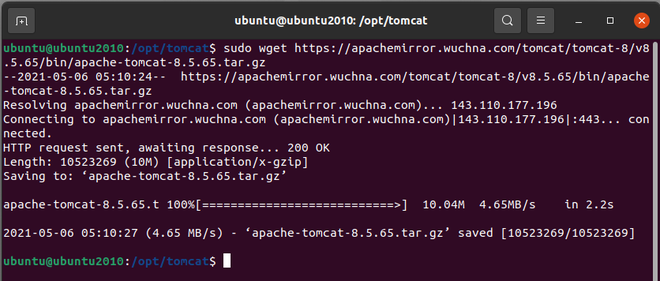

Lastly, change script permissions to grant execute access in /opt/tomcat/bin/with: sudo sh -c 'chmod +x /opt/tomcat/bin/*.sh' Step 7: Create System Unit File Grant group and user ownership over the installation directory to the tomcat group and user with the command: sudo chown -RH tomcat: /opt/tomcatģ. Move to the directory where the Tomcat installation is located: cd /opt/tomcatĢ. You need to setup execute privileges over the directory.ġ. The new Tomcat user you created does not have executable privileges, but it needs to access the installation directory. Then, extract the file in the new directory with the following command: sudo tar xzvf apache-tomcat-9*tar.gz -C /opt/tomcat -strip-components=1 Step 6: Modify Tomcat User Permission To extract the tar.gz Tomcat file, create a new /opt/tomcat/ directory with the command: sudo mkdir /opt/tomcatĢ. You can create shortcuts of these batch files on the desktop or inside Startup Menu for easily starting and stopping Tomcat server whenever required.1. You will find two batch files with names startup.bat and shutdown.bat. Start and Stop Tomcat Server on Windows 10, 8 and 7Īfter successful installation, go to BIN folder directly under Tomcat folder. This is how we did install Tomcat Server on Windows 10, Windows 8 and Windows 7 operating systems. Setup CATALINA_HOME variable path as C:\Tomcat8 which is my Tomcat installation path. Or setup JRE_HOME variable path as C:\Program Files\Java\jre1.8.0_131 in my case. Setup JAVA_HOME variable path as C:\Program Files\Java\jdk1.8.0_131 in my case. If you change any deployed files, you may need to restart the server.įollow the Java Environment Setup in Windows Tutorial to setup JAVA variables globally. You need to setup JAVA_HOME or JRE_HOME and CATALINA_HOME so that you can do some maintenance operations on the Tomcat server like Starting and Stopping the Server.


 0 kommentar(er)
0 kommentar(er)
